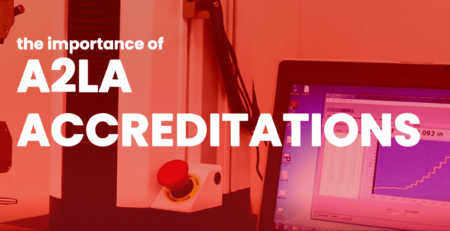HALT / HASS Standard – IPC 9592A
Joel Coffman2025-03-05T10:50:53-06:00The First HALT / HASS Standard Of Its Kind
The History of IPC and IPC 9592A
In 1957, the Institute for Printed Circuits was formed. As its focus shifted and broadened over the years, the organization changed its name to simply “IPC.” The mission of IPC is to represent all facets of the electronics industry, including design, printed circuit board manufacturing, and electronics assembly. It is a member-driven organization and is a leading source for industry standards, training, market research and public policy advocacy.
In 1995, IPC adopted “Principles of Standardization” as a guiding principle. IPC Standards and Publications are designed to serve the public interest by helping to eliminate misunderstandings between manufacturers and purchasers, facilitating interchangeability and improvement of products, and assisting the purchaser in selecting and obtaining with minimum delay the proper product for a particular need. It is important to note that the existence IPC’s Standards and Publications shall not in any respect preclude any member or nonmember of IPC from manufacturing or selling products not conforming to such Standards and Publication. Also, the use of these standards is not limited to IPC members, but can be voluntarily used by any organization, domestic or international.
In 2007, IPC released IPC 9592, “Performance Parameters for Power Conversion Devices”. The goal of this standard was to harmonize the supplier’s requirements for design, qualification, and production test practices. It included guidelines for Design for Reliability, Design and Qualification Testing, Quality Processes and Manufacturing Conformance Testing.
The Design for Reliability guidelines included Best Practices for specifying, designing and documenting performance and reliability, such as Mean Time Between Failure (MTBF), Derating, Corrosion, Failure Modes and Effects Analysis (FMEA), Voltage Spacing and Moisture Sensitivity Level (MSL). The Design and Qualification Testing section served two key purposes. First, it provided assurance that a product performed to specification, and second, that it would perform in the intended environment without failure.
To meet these requirements, this section defines specifications for:
- Design Verification Testing (DVT)
- Environmental Stress Testing (EST), including:
- Highly Accelerated Life Testing (HALT )
- Temperature
- Humidity
- Bias ( THB)
- High Temperature Operating Bias (HTOB)
- Temperature Cycling (TC)
- Power and Temperature Cycling (PTC)
- Shock and Vibration (S&V )
- Drop
- Corrosion
- Dust
- Solderability
- Electro-Magnetic Susceptibility (EMS), including:
- Electrical Fast Transients (EFT)
- Electro-Static Discharge (ESD)
- Immunity
- Emissions / Acoustic Noise / Product Safety
The Quality Processes section of the standard defines supplier and sub-tier quality requirements through the use of Quality Management Systems (QMS), Sub-Tier Materials Traceability and Change Authorization & Qualification. Finally, the standard defines Manufacturing Conformance Testing, such as Highly Accelerated Stress Screening (HASS), Highly Accelerated Stress Auditing (HASA), Burn-In (BI), Ongoing Reliability Testing (ORT), Safety and OBA.
The original release of 9592 defined these standards for Power Conversion Devices (PCD). PCDs are defined as AC to DC and DC to DC modules, converters and printed circuit board assemblies. Within the document, these devices are broken down into categories of internal DC output power supplies (AC or DC input), board mounted DC to DC converters and external AC to DC power supplies (adapters & chargers). In addition, it defines two reliability classifications for the devices. The General or Standard classification are for devices intended to function in a controlled environment with an expected lifetime of five years. The Enhanced or Dedicated Service classification is for carrier grade/high performance devices with a 15 year life requirement.
The original version of 9592 included a description of the use of Highly Accelerated Life Testing (HALT) as part of the Design and Qualification requirements. In 2010, IPC revised 9592 and released 9592A. In 9592A, the description of HALT was significantly expanded, including greater detail on its implementation. These changes came from a desire to clarify and specify a process that was not well defined in the industry. It defines the process for HALT as well as for Highly Accelerated Stress Screening (HASS). Revision A includes a requirement for HALT and a recommendation for HASS.
Section 5.2.3 defines HALT (See Figures 2 and 3) as follows:
“HALT is a series of tests performed on a product as part of the design process to aid in improving product robustness. The principal idea of HALT is to find design weaknesses as quickly as possible and then fix them. After improving one weakness, the next design weakness is found and improved and so on until no design weaknesses remain that could result in field failures. During HALT, a product is stressed beyond the product specifications… to quickly accelerate and identify design weaknesses… HALT is not a pass/fail test.”
Appendix D goes into greater detail on both the purpose and the process of HALT, as well as the equipment needed to perform the testing.
HALT Lab Equipment and Power Supply Unit (PSU) Samples
To perform HALT as defined in 9592A, a test system is required that is capable of stressing a product in a combined thermal and vibration environment, using Repetitive Shock (RS) 6 Degree Of Freedom (DOF) vibration. A vibration level of 50 gRMS minimum is specified, along with a wide thermal range of at least -80°C to +170°C. This thermal range, combined with thermal change rate requirements of at least 40°C per minute, demands the use of direct injected liquid nitrogen cooling.
In addition to describing these chamber requirements, 9592A goes on to define the key pieces of ancillary test equipment that are needed to set up an effective HALT lab. For a PSU supplier that is new to HALT, this information helps insure success, as well as allowing better cost analysis when setting up a lab.
The equipment list reflects the requirements in 9592A for careful and complete data collection and reporting, as well as the extensive functional testing that is critical to an effective HALT. The ability to monitor and record multiple channels of thermocouple, accelerometer, voltage and current measurements are required for the testing.
The functional testing for HALT is described in section 5.2.3.6. The recommended sample size is outlined in section 5.2.3.5 (See Figure 4). A sample size of three units for each stress is defined, although in many cases units that were tested under one stress and did not fail can be used for another test.
The HALT Process
IPC 9592A describes a HALT process that incorporates the thermal and vibration stresses common to classic HALT (See Figure 5). It includes the application of these stresses separately, then in combination, with each stress being applied in a step-wise fashion. Reference 9592A Appendix D, section D.1.1 for a detailed description of the recommended step stress process.
In addition to these standard HALT stresses, 9592A describes input and output loading stresses that are unique to PSU testing (See Figure 6). They are first applied in conjunction with the thermal limits identified in the thermal step stressing, then finally the PSU is subjected to combined thermal, vibration, output and input stresses. These additional stresses make the HALT test much more effective for PSU testing than simply using the thermal and vibration stresses alone.
A well written and comprehensive HALT report is very important to a successful and valuable HALT. 9592A addresses this in Section 5.2.3.7. It states that the report should include the basic, typical items that are common to most test reports – descriptions of test equipment used, calibration verifications, identifications of units tested, etc. However, it also puts emphasis on some of the report requirements that are particularly important in HALT, including software and hardware revisions of both the units under test and the test equipment and detailed descriptions, with supporting photos, of the fixture details and the thermal and vibration monitoring points. In HALT, it is not unusual to repeat a test after corrective actions have been implemented. The report should provide all the details described in 9592A, since the fine points of accelerometer placement or software revisions can affect the outcome of the test, resulting in invalid data when the test is repeated.
Another important use of this detailed report is to provide clear documentation that the testing was done, and was performed in accordance with the procedure laid out in 9592A. Many times, a PSU manufacturer will perform HALT in response to a requirement from a customer. With a good HALT report in hand, the manufacturer can alleviate any concerns on the part of the customer about the testing done, and leave a good impression of the validity of the results of their testing and their dedication to quality design.
Post HALT Requirements
The completion of the actual HALT test, including the identification of failure modes precipitated during the test, is only the beginning of the work to be done in HALT. The most important part of the process is to perform root cause failure analysis and implement corrective actions. Section 5.2.3.8 of 9592A states “All failures found during HALT tests shall be analyzed to their root causes.” As stated earlier in the document, the key output of HALT is failure modes. If these failure modes are ignored, poorly understood or insufficiently responded to, then much of the benefit of HALT can be lost. As part of the process to ensure the proper response to failure modes, this same section also states that the root cause analysis process must be documented, along with the results and corrective actions taken.
It is also important for designers incorporating the PSU to understand the corrective actions taken. Section 5.2.3.8 states that PSU users shall receive a report with the cause and effect for all corrective actions. It is possible that a failure mode found in HALT can be safely ignored, without corrective action taken. However, this conclusion can only be arrived at after a failure analysis is completed, and the logic understood and approved by the user as well.
HASS and HASA in 9592A
The original version of 9592 included a description of Highly Accelerated Stress Screening (HASS) and the Highly Accelerated Stress Audit (HASA). These are production tests, with HASS being performed on 100% of the units shipped, and HASA being performed on a sample of the units. These tests were included to mitigate the risks of manufacturing related errors and the resulting negative effects for the users.
9592A expands the description of HASS and recommends it as more effective than Burn-In. It also states that the supplier can choose between HASS and Burn-In. Section 7.3.2 in the standard defines HASS and HASA, while Section D.2 of appendix D expands that description and discusses the process of implementing HASS.
The vibration and thermal limits that are used in a HASS are based on the operational and destruct limits identified in HALT (See Figure 7). HALT must be performed before HASS in order to define those limits. The starting point for the screen, as well as the Proof of Screen (POS) process that is used to demonstrate the safety and effectiveness of the screen are defined in section D.2 as well, and is largely unchanged from the original 9592. It follows the method most commonly recommended in industry descriptions of the test process. See Figure 8 for a typical profile.
The equipment needed for HASS is very similar to the equipment used for HALT, but there are a few key differences. Because the limits for HASS are, by definition, lower than those found in HALT, the HASS system may not need the extreme temperature range, rates of change or high vibration levels defined for the HALT system. While the standard does state that the testing “…must be performed in industry standard HALT/HASS chambers”, it reduces the thermal change rate requirements to 30°C/minute. Also, a system with greater table surface area will improve the efficiency/through-put of the process.
A key part of the equipment needed for HASS/HASA is the HASS fixture. A description of the design and validation of a HASS fixture is beyond the scope of this paper, and is beyond the scope of 9592A as well. The standard simply states,
“HASS/HASA fixture should be designed and fabricated to support the product through-put testing and provide proper vibration transmissibility, thermal uniformity and a balanced thermal rate of change.”
The abbreviated description of the HASS fixture design and qualification reflects a necessary restriction in the HASS/HASA portion of the 9592A standard. The ‘Purpose’ section of section D.2 states “This document is to serve as a general guideline and a reference… Since it is only a general guideline, suppliers are required to generate their own testing profile based on their actual product performance and physical characteristics.” Because PSUs differ so much, it is impossible to provide a specific HASS/HASA procedure and fixture that will work in all cases. As is the case throughout the industry, the implementation of HASS/HASA on a PSU requires careful thought with appropriate consideration given to the unique characteristics of the specific product being tested.
9592A discusses the implementation detail of HASS and HASA and focuses on the unique requirements specific to PSU manufacture. Functional testing requirements for both HASS and Burn-In are distinctly specified.
The move from HASS to HASA can provide a significant savings to a PSU supplier. However, the move must be done intelligently. 9592A addresses this issue by clearly defining the production maturity, production quantities, and field and factory failure rates that justify the implementation of HASA. A sampling plan is also specified.
Failures found in HASS/HASA are treated in the same way as HALT failures. Root cause analysis and corrective action must be conducted. This is particularly important in HASA. The standard states that,
“Failures that occur in a sample population require immediate Root Cause FA/CA…”
Summary
The increased emphasis placed on HALT, HASS and HASA in the revision from 9592 to 9592A reflects the value of the methods by IPC, as well as the perceived need for a defined process for the testing. The document includes descriptions of the most important requirements for successful implementation of the test methods, including the criticality of Failure Analysis and Corrective Action, the need for the use of product specific stresses and full functional testing during the process, and the importance of detailed reporting. By implementing HALT, HASS and HASA as outlined in this new revision, a supplier will realize the maximum gains in product reliability and reductions in warranty costs that the test methods can provide.
Excerpts of IPC 9592A, Requirements for Power Conversion Devices for the Computer and Telecommunications Industries, have been used with permission by IPC, the Association Connecting Electronics Industries ®. Licenses for IPC 9592A can be purchased online at the association’s website: www.ipc.org






